After a fashion? 多多少少
中国日报网 2021-10-26 13:58

Reader question:
Please explain “after a fashion” in this sentence: That would be a compliment – after a fashion.
My comments:
It’s probably not exactly a compliment, but you can take it as one.
A compliment is form of praise, an approval, an expression of admiration. In other words, kudos. Well done.
In our example, “that” which is expressed may not strictly be considered a compliment because it’s expressed with a great deal of, say, reservation. But it is okay if you take it as a compliment.
I mean, it may not be a perfect and unconditional compliment, but it is a compliment in a way, to some extent, more or less, that is, if we do not to put too fine a point on it.
That’s what “after a fashion” implies or suggests. As an idiom, “after a fashion” means just that, to some extent, in a way, more or less.
Fashion here refers not to the style of clothing that is popular at a particular time. It has nothing to do with the fashion industry as a whole. Instead, “fashion” in “after a fashion” refers to the manner in which something is done. Online schools, for example, sometimes offer curriculums that cover all subjects. They may not teach everything well, but they do offer to teach everything in some fashion.
In other words, in one rough way or another.
And I won’t mind if those schools can take that as a compliment. I don’t mind. I think some of them actually will take it as a compliment, after a fashion.
See?
All right, here are more examples of “after a fashion”:
1. As soon as she woke up her demeanour had changed. She became alert and business-like, put her clothes on, knotted the scarlet sash about her waist, and began arranging the details of the journey home. It seemed natural to leave this to her. She obviously had a practical cunning which Winston lacked, and she seemed also to have an exhaustive knowledge of the countryside round London, stored away from innumerable community hikes. The route she gave him was quite different from the one by which he had come, and brought him out at a different railway station. ‘Never go home the same way as you went out,’ she said, as though enunciating an important general principle. She would leave first, and Winston was to wait half an hour before following her.
She had named a place where they could meet after work, four evenings hence. It was a street in one of the poorer quarters, where there was an open market which was generally crowded and noisy. She would be hanging about among the stalls, pretending to be in search of shoelaces or sewing-thread. If she judged that the coast was clear she would blow her nose when he approached; otherwise he was to walk past her without recognition. But with luck, in the middle of the crowd, it would be safe to talk for a quarter of an hour and arrange another meeting.
‘And now I must go,’ she said as soon as he had mastered his instructions. ‘I’m due back at nineteen-thirty. I’ve got to put in two hours for the Junior Anti-Sex League, handing out leaflets, or something. Isn’t it bloody? Give me a brush-down, would you? Have I got any twigs in my hair? Are you sure? Then good-bye, my love, good-bye!’
She flung herself into his arms, kissed him almost violently, and a moment later pushed her way through the saplings and disappeared into the wood with very little noise. Even now he had not found out her surname or her address. However, it made no difference, for it was inconceivable that they could ever meet indoors or exchange any kind of written communication.
As it happened, they never went back to the clearing in the wood. During the month of May there was only one further occasion on which they actually succeeded in making love. That was in another hiding-place known to Julia, the belfry of a ruinous church in an almost-deserted stretch of country where an atomic bomb had fallen thirty years earlier. It was a good hiding-place when once you got there, but the getting there was very dangerous. For the rest they could meet only in the streets, in a different place every evening and never for more than half an hour at a time. In the street it was usually possible to talk, after a fashion. As they drifted down the crowded pavements, not quite abreast and never looking at one another, they carried on a curious, intermittent conversation which flicked on and off like the beams of a lighthouse, suddenly nipped into silence by the approach of a Party uniform or the proximity of a telescreen, then taken up again minutes later in the middle of a sentence, then abruptly cut short as they parted at the agreed spot, then continued almost without introduction on the following day. Julia appeared to be quite used to this kind of conversation, which she called ‘talking by instalments’. She was also surprisingly adept at speaking without moving her lips. Just once in almost a month of nightly meetings they managed to exchange a kiss. They were passing in silence down a side-street (Julia would never speak when they were away from the main streets) when there was a deafening roar, the earth heaved, and the air darkened, and Winston found himself lying on his side, bruised and terrified. A rocket bomb must have dropped quite near at hand. Suddenly he became aware of Julia’s face a few centimetres from his own, deathly white, as white as chalk. Even her lips were white. She was dead! He clasped her against him and found that he was kissing a live warm face. But there was some powdery stuff that got in the way of his lips. Both of their faces were thickly coated with plaster.
- Part 2, Chapter 3, 1984, by George Orwell.
2. Ever since scientists first discovered the existence of black holes in our universe, we have all wondered: what could possibly exist beyond the veil of that terrible void? In addition, ever since the theory of General Relativity was first proposed, scientists have been forced to wonder, what could have existed before the birth of the Universe – i.e. before the Big Bang?
Interestingly enough, these two questions have come to be resolved (after a fashion) with the theoretical existence of something known as a Gravitational Singularity – a point in space-time where the laws of physics as we know them break down. And while there remain challenges and unresolved issues about this theory, many scientists believe that beneath veil of an event horizon, and at the beginning of the Universe, this was what existed.
In scientific terms, a gravitational singularity (or space-time singularity) is a location where the quantities that are used to measure the gravitational field become infinite in a way that does not depend on the coordinate system. In other words, it is a point in which all physical laws are indistinguishable from one another, where space and time are no longer interrelated realities, but merge indistinguishably and cease to have any independent meaning.
- What Is A Singularity? UniverseToday.com, February 16, 2011.
3. No one can resist the allure of Zoë Kravitz. Not the waifish model-cum-waitress serving us at Greenpoint’s premier hangout Five Leaves, where we’re meeting for our interview. Between taking our order she reports back to her colleagues in hushed tones that she is serving “Zoë’s table”. Not the archetypal Brooklynite couple reclining in the park on the overwhelmingly humid mid-July day, who only break from gazing at each other to stare as we stroll past post-lunch. Not the two hipster bros who whip their heads around at breakneck speed on Williamsburg’s Bedford Avenue as she walks back to her home nearby.
Although Kravitz herself seems unaware of the attention, one thing is clear: she is the cool kids’ cool kid. She arrives for our interview straight from Pilates, dewy from the midday heat and dressed down in a white tank and heather-grey yoga shorts, her signature wavy braids framing her delicate features. Her mix of good looks and down-to-earth energy (she’s happy to offer counsel on my dating life) goes to prove that some people really do have it all. She’s genuinely nice too. She greets me with a hearty grin, graciously pours us both water every time we run low, and takes breaks from her kale and steak salad to ask with genuine concern if the sound from the busy Brooklyn street where we are sitting will interfere with my recording.
Arguably set up for life with Eighties (and enduring) style icon and actress Lisa Bonet as her mother and perennial rock god Lenny Kravitz for a father, Zoë Kravitz could easily have had her head turned by the inevitable interest this was going to generate in her and her life and assumed vapid It-girl status. A fashion favourite, she has been the face of Saint Laurent across beauty, fragrance and fashion for four years – “It’s simple and beautiful clothing,” she says.
“I feel like me and Anthony inspire each other. We talk about inspiration pictures and send things back and forth. Me and Anthony are tight.” She has also fronted campaigns for Calvin Klein, Tiffany and Balenciaga. Yet Kravitz has taken that undeniable head start in life and written her own story.
Beginning her acting career with appearances in films such as 2011’s X-Men: First Class and 2014’s Divergent garnered her big-screen time, albeit in supporting roles. A kick into high gear came with parts in George Miller’s Mad Max: Fury Road and the Fantastic Beasts film series. But it was her performance in HBO’s Big Little Lies that led to Kravitz breaking through. Holding court as the bohemian yoga instructor Bonnie Carlson (a part originally written for a white woman, and for which Kravitz adroitly handles the nuanced racial power dynamics in the shifting of the story), she stars alongside an assemblage of Hollywood’s finest actors: Meryl Streep, Nicole Kidman, Reese Witherspoon and Divergent co-star Shailene Woodley.
In addition to the lead character, Kravitz was an executive producer on the project and her command was seen everywhere from the freewheeling, globe-trekking soundtrack to the directing decisions. “I don’t think the network understood the importance of that story,” she says, “but I am still touched by how many women, especially women of colour, come up to me saying they loved it.”
In the midst of the Covid-19 pandemic, she left her Williamsburg home for London to take on her biggest role yet, starring alongside Robert Pattinson’s Batman as Selina Kyle – aka Catwoman. She had already played the role, after a fashion, in 2017’s The Lego Batman Movie, but now she can get her teeth into a character that has already been portrayed by Michelle Pfeiffer, Halle Berry and, most recently, Anne Hathaway. It was the biracial Eartha Kitt’s 1960s Catwoman – coming as it did in an era of racial tensions even more heightened and politicized than our own – that has remained in memory, immortalized. Today the role comes with its own legacy and feverishly passionate fan base. The weight of that didn’t go unnoticed by Kravitz, but it didn’t deter her either. “It was different. It was scary. It was unexpected for me. And that was what was exciting.”
With megastardom on the cards, her rise hasn’t come without setbacks. After marrying actor Karl Glusman in an intimate ceremony at her father’s Paris home in 2019, she filed for divorce 18 months later – a dark spot on an otherwise bright few years but the start of an invigorating new chapter. She feels affirmed – unafraid. Her feature directorial debut Pussy Island was recently acquired by MGM. Kravitz herself is reluctant to divulge much but she’s already hard at work on the project, off to scout for locations after we meet. “I am 32 and it’s fucking fantastic,” she says. “I am happy about all the experiences. If you don’t learn and grow, what’s the point?”
- No One Can Resist the Allure of Zoë Kravitz, AnOtherMag.com, October 9, 2021.
本文仅代表作者本人观点,与本网立场无关。欢迎大家讨论学术问题,尊重他人,禁止人身攻击和发布一切违反国家现行法律法规的内容。
About the author:
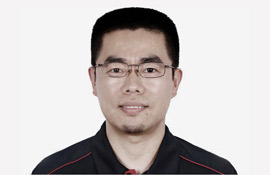
Zhang Xin is Trainer at chinadaily.com.cn. He has been with China Daily since 1988, when he graduated from Beijing Foreign Studies University. Write him at: zhangxin@chinadaily.com.cn, or raise a question for potential use in a future column.
(作者:张欣 编辑:丹妮)









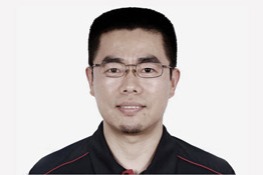
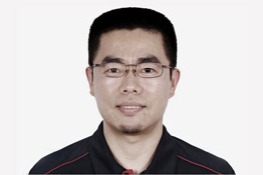
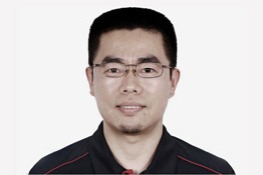
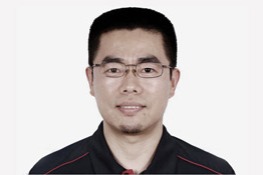
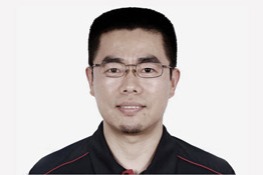



 英语点津微信
英语点津微信 双语小程序
双语小程序